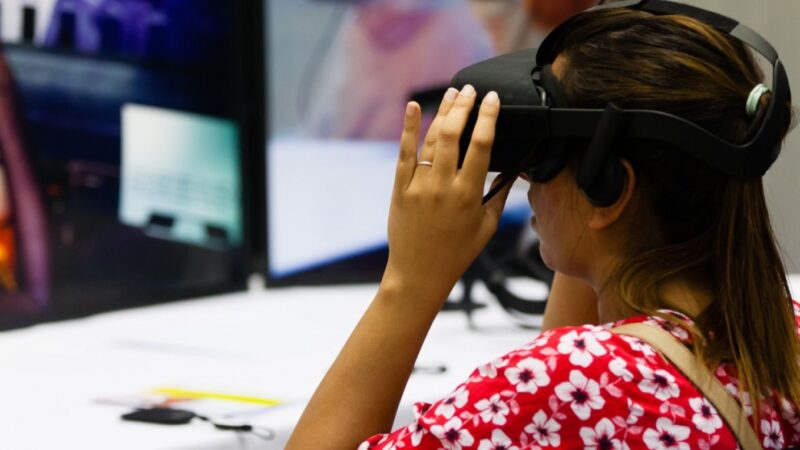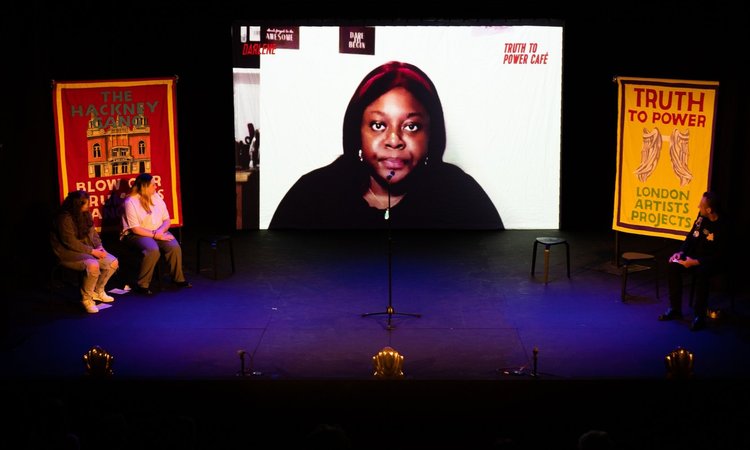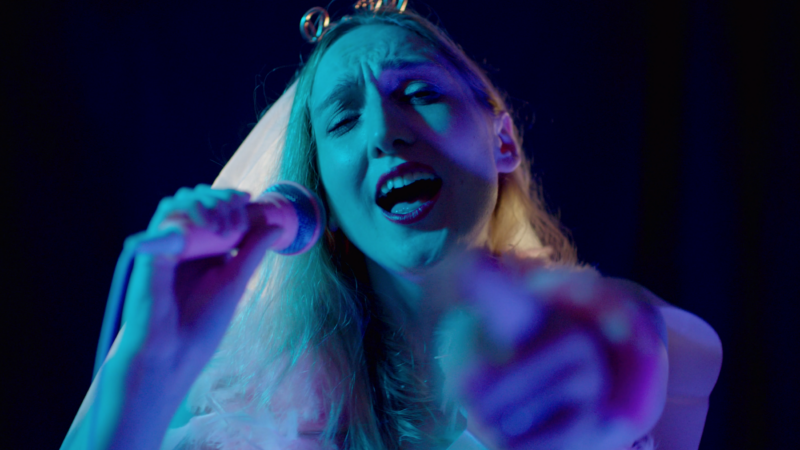How do you use digital innovation to bring people to a park? This case study explains how Yorkshire Sculpture Park (YSP) worked with The Space to radically change how visitors engage with its exhibits and share their experiences online. Learn how a 500-acre open-air art gallery reached out to attract more visitors and developed a whole new experience that added to this arts organisation’s forty-year history.
What’s it about?
YSP is an open-air art gallery in Wakefield, West Yorkshire , set in the historic, 500-acre Bretton Estate. The park has around 80 permanent pieces by artists including Barbara Hepworth and Henry Moore and its half a million visitors each year can enjoy a programme of regular exhibitions in six galleries.
Nina Rogers, YSP’s head of marketing and PR says: “What we wanted was to take inspiration from the ‘art without walls’ ethos to create a unique experience for visitors. We wanted to add to the way that people could access the park and bridge digital and physical experiences.”
With a commission from The Space and working with Amsterdam-based digital design agency Studio Moniker, the result was Sculpture Cam. Using their phones to access the Sculpture Cam web app, visitors are shown silhouettes of the artwork closest to them wherever they are in the park. Find the sculpture, line up the silhouette and you can take a single photograph that can then be shared online – or you can go further.
Using Sculpture Cam, you can create a whole 3D animation of each sculpture and save or share that. Plus, when you contribute your image or animation to the website, you get extra information about the piece you’ve photographed.
Doug McFarlane, associate producer for the project explains: “Visitors are always taking pictures so it was about how we can utilise that in a communal way to create something interesting, to allow people to discover more about each sculpture and lead them on a journey around the park.”
Anyone can access Sculpture Cam from anywhere: if you’re outside the park then it shows you images people have already taken. These are not simple snapshots, either. Visitors create and contribute to mesmerising 3D animated GIFs where you see the silhouette of a piece filled in by dozens and hundreds of different images. With different angles, different camera positions and even visitors’ selfies, the sculptures throb with life.
Solving technical challenges
The project would not have been possible technically even a few weeks before The Space, Studio Moniker and YSP began working together. Sculpture Cam is a a web app, rather than a app you need to download to your phone and while there were reasons to choose this route, there were also problems.
“We wanted the barriers to using Sculpture Cam to be as minimal as possible,” says McFarlane. “So that people could just load it up straight away, they didn’t need to find it in the App Store or Google Play and download it. People know how to use the web browser on their phones and we wanted to minimise technical hurdles”.
However, Sculpture Cam needs to know your location in the park and it needs you to be able to use your camera. Luna Maurer of Studio Moniker says: “We were using a technology that was completely new, it was WebRTC realtime communication, which means you have a layer on top of your camera via the browser. This was previously only possible on Android and now it was finally possible to do it on iOS.”
Apple’s iOS, the software running iPhones and iPads, had previously lacked this facility. “It was fate, serendipity, that it literally came out the month before we started building Sculpture Cam,” says McFarlane.
However, just because it was now possible, that didn’t mean that it was straightforward. “We had a lot of technical limitations and problems,” says Maurer. “Such as where we had visitors in the corners of the park where the internet connection and GPS data was less reliable. Then if you use Sculpture Cam for a long time, it takes a lot of battery power from your phone.”
Sometimes solving one problem brought more benefits, though. Maurer credits YSP for resolving the battery issue: “They have added battery recharging stations, that’s super-nice.”
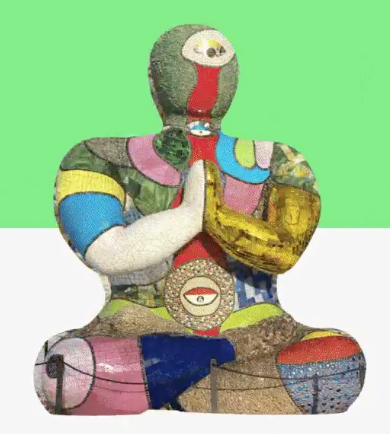
McFarlane says that accurate GPS was a more complex issue because of how the park is arranged. “You don’t need to park at the visitor centre at YSP, you can come in anywhere,” he says. “So launching the app takes you to the nearest sculpture but what that starting sculpture is was one of the big challenges.”
Wanting as many people as possible to use Sculpture Cam also affected GPS. “Because you’re using a web app, anyone can load it up even if they’ve got a three or four-year-old phone. GPS accuracy seemed to be more of a problem with older phones so that was an ongoing issue, the need to test and mitigate it.”
The approach
As an Arts Council National Portfolio Organisation, YSP had worked extensively on its website in recent years but its digital strategy doesn’t stop there. With a small team, the problem was trying to learn what was possible while continuing all its existing work.
“I think that’s a real issue,” says YSP’s Nina Rogers. “I don’t have niche understanding of the digital solutions out there so you have to rely on other people’s expertise. It was really good to have The Space there to offer advice.”
Rogers worked with associate producer Doug McFarlane and Space commissioning executive, Sarah Toplis . “When I first met Sarah, I told her all about the park, what we were about and what issues we face. I wanted digital agencies to see what our offer was and to show me what amazing things we could do digitally.”
She says that she now believes the brief should have been more specific. “I think with hindsight we perhaps should have been more specific in our brief. But, conversely we really wanted to see innovative, exciting proposals, and didn’t want to limit creativity.”
Around half a dozen digital agencies were invited to pitch and Amsterdam’s Studio Moniker won the commission. “We liked Studio Moniker because they were looking at the existing behaviour of people in the park,” says Rogers. “We really liked their collaborative approach to getting the visitors to build up 360-degree animations of our sculptures.”
On winning the commission, Studio Moniker’s Luna Maurer says: “We rented a car, drove on the wrong side of the road – very exciting – and visited the park. It’s important to meet the people you’re working with and we got the feel of the place, we took a lot of pictures.”
Studio Moniker then developed its ideas, created mock-up wireframe versions of the web app, and YSP carried out extensive user testing. “We changed the user journey completely, the way visitors would experience Sculpture Cam, as a result of what we found through the focus groups,” says Rogers. “Moniker was really good about that: they took all of the feedback and thought about it, really listened to what had been said.”
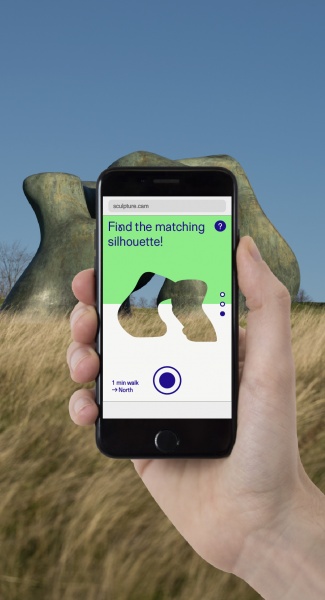
As with any arts organisation, YSP has a small staff that is already doing a lot of work. For this project, they needed everyone to contribute. “The Space were very supportive of that,” says Rogers. “They helped with presentations to the staff. And we bought a couple of phones for staff to use, we added charging points for them and visitors as well.”
Audience engagement
If the staff at YSP were the first audience to use Sculpture Cam, they were also the first to see that it began as quite an empty app. Today there can’t be a sculpture in the park that hasn’t had hundreds or thousands of photographs taken but at the beginning, that wasn’t the case. “When we launched it, the app was just a load of blank silhouettes because no one had taken any photos,” says Rogers. “So that was a real challenge because it didn’t look the way we wanted it to.”
That quickly changed as staff, users invited to test the app and then ever-increasing numbers of visitors used Sculpture Cam. Yet there was always and still remains an issue of how you get visitors to try it for the first time.
As well as assigning an associate producer to the project, The Space helped YSP find a Digital & Interactive Intern to raise awareness of Sculpture Cam among visitors over the busy summer period. Alice Morris is a graphic design student with a strong understanding of digital and social. She says: “I was fully dedicated to Sculpture Cam, from spreading the word out in the park, to auditing issues and documenting what would improve it.”
Morris was able to contribute to how the app worked but she also found ways to get people using it. “Having my whole time spent on the app also gave me chance to research other avenues for promoting the activity,” she explains. “For example, one of the more successful promotions on social media were the Snapchat ad campaigns and these came about because I had time to research one of the key demographics of people using the Park and what social media platforms they used.”
Morris worked extensively in the park, talking with over 500 visitors and analysing both what they told her and what she observed of them using the app. Then she also conducted promotional campaigns on social media. “One of the major insights we gained is that Facebook is now a platform for the older generation.”
Combining promotion online and with visitors, YSP ran an Afternoon Tea Week competition. Morris then examined how audiences responded on different channels to that competition and found that Instagram performed particularly well.
Studio Moniker’s Luna Maurer says this project was unusual in how specific its main audience was. “Usually we make digital work that can live online, that you can also spread easily,” she says. “But this work was something that makes most sense to do when you’re in the park itself. When we do participatory works, a lot of people have to join in but this time it was a case of just doing it for the people in the park and not the community around it.”
Maurer credits The Space and YSP for getting audiences to know about Sculpture Cam. “At the beginning, that was very difficult and it is essential for such a work that people know about it and use it.” She says that a key factor in audience engagement was the addition of the Digital & Interactive Intern. “Then they added an intern who was in the park, speaking to people, telling them about it and that was very important, she was very good.”
Outcomes
With a busy arts organisation, a digital project runs the risk of becoming just like another exhibition: a temporary addition that’s either available for a short time or can simply only be promoted for a while. Sculpture Cam, though, continues to be part of Yorkshire Sculpture Park’s offering, and is a completely new way for visitors to engage with artwork, challenging them to see sculpture from all angles.
And, the longer it’s been in place the more it draws in new people. Once you see the animations of each sculpture created by thousands of visitors, you understand the whole idea, that you’re collaborating in a mass effort to photograph and document the sculptures in the park – and that’s its true appeal.
Rogers is very happy with this result and feels that Sculpture Cam has helped YSP think more about its future digital strategy and how digital can integrate with everything the organisation wants to do.
“At the time we started Sculpture Cam, we were developing a wayfinding masterplan, creating a new printed map for visitors, so I thought it best to keep digital orientation out of the brief,” she says. “The journey we’ve come on with Sculpture Cam means we’re really well placed, in terms of experience and knowledge, to embark on new digital projects, possibly tackling wayfinding next.”
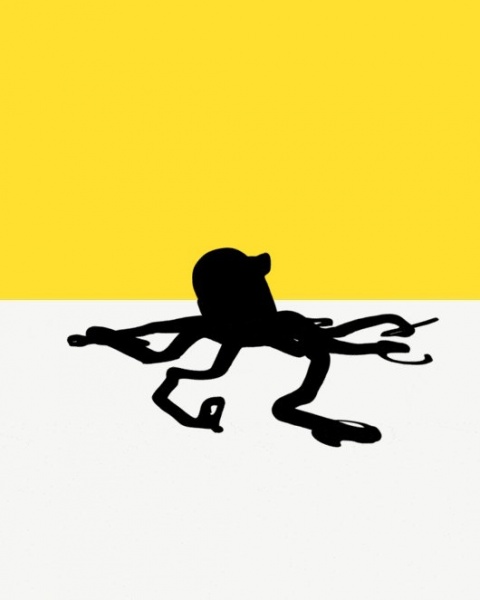
Future developments
YSP is now looking to increase how it uses digital in its offering to visitors and has taken on Alice Morris in a part-time marketing position.
There is potential to roll out Sculpture Cam at other venues and this is something YSP is keen to explore in the future. Luna Maurer agrees but also hopes first to refine the GPS experience within the app.
It’s all about providing the visitor with a better experience but Maurer says it’s also about finding out what you can do. “We appreciate the confidence that YSP and The Space had in us, it is super that they went for the experiment. Because it’s a participatory work, you don’t know how people will react to it but then beautiful things can happen.”
Top Tips around adding to physical exhibitions with digital technology
- Don’t see digital as a separate project: it is part of your whole offering and needs to be woven into all of your work with visitors. That does mean looking at how you promote it alongside everything else you do but at least as important is getting your whole team involved. Your staff is already busy and it can seem to them that this is an extra task on top of their jobs unless you show them from the start how it’s meant to improve your complete offering for all visitors.
- Take time to think first about what you want to achieve rather than what the latest technology is capable of. Digital projects are exciting and there is a temptation to rush into it but the best ones are not temporary, they are permanently changing your arts organisation’s work.
- Be clear about what you want and develop a clear brief. YSP was clear on certain things they didn’t want because they were already planning work in particular areas. But being too wide open means you can spend time pursuing ideas that don’t work out.
- Equally, though, don’t be too prescriptive: allow for experimentation and playing with technology to discover new experiences. That really means giving the project some time so start as early as possible.
- Assign someone on your team to be focused on the digital project right from the start. Have that person work with all your staff so that everyone knows and is involved with the project.
- Build in time for testing the project with your visitors. What looks brilliant to you in your office can seem very different to people walking around your site. So test extensively and be ready to go back to the beginning if necessary.
More information
Learn more about YSP on the official site
Plus you can check out Sculpture Cam itself
How useful was this resource?

